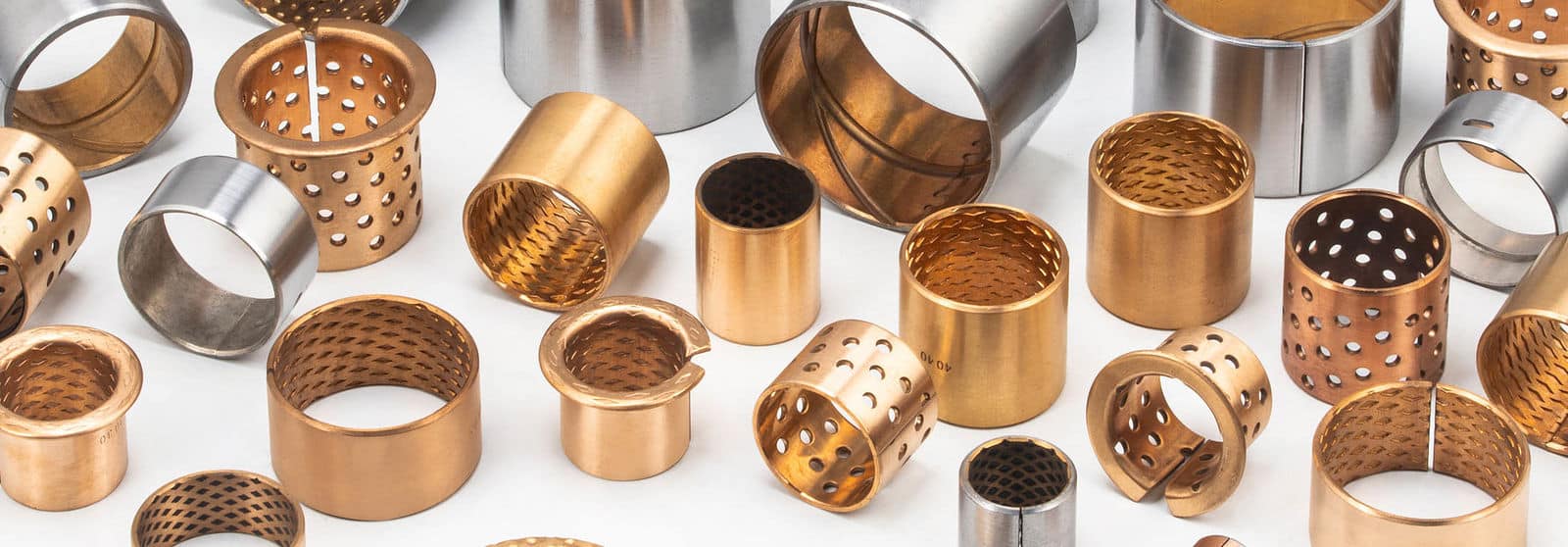Understanding Low Friction Bushings: Exploring Metal Self-Lubricating Bronze, Steel-Backed, And Custom Size Options
Enhancing Performance with Friction Science Solutions for Components, long life, low friction bushings
In the realm of mechanical engineering, the performance of self-lubricating bearing components under high temperature conditions is crucial. A low-friction power system is instrumental in reducing energy losses, enhancing the performance of bearing sleeves, and thereby improving overall mechanical efficiency. Sliding bearings play a pivotal role in advancing the self-lubricating and wear-resistant properties of these systems.
Offering a unique combination of high load-bearing strength, low friction and low wear, low friction bushings offer good wear and low friction performance over a wide range of loads, speeds and temperatures in dry running conditions …
Whether you’re seeking a complete, ready-to-use solution or planning to create a customizable Low Friction Bushings project tailored to your needs, we’re here to help. Let us provide a solution that aligns perfectly with your specific application and requirements. Please feel free to reach out to us by email.
Metal-Polymer Low Friction Plain Bearings, Boosting Efficiency
High-quality sliding bearings are designed with ultra-low friction coefficients. This significant reduction in friction between moving parts not only improves efficiency but also extends the lifespan of the bearings. The simplified design of these components eliminates complex parts, reducing the system’s weight and volume, which in turn boosts the overall system efficiency.
Low Friction Bushing Reducing Noise
The sliding layer of polymer materials used in sliding bearings effectively reduces friction and absorbs vibrations. This not only lowers the noise levels but also enhances the operational experience of the mechanical equipment’s bearings.
Applying Professional Friction Science Solutions
Incorporating advanced friction science solutions in the design and manufacture of mechanical components can lead to groundbreaking improvements in performance. The use of specialized materials and innovative designs tailored to withstand high temperatures without compromising on performance is key. As industries continue to evolve, the reliance on robust friction science solutions will only grow, ensuring that mechanical components not only meet but exceed the rigorous demands of modern applications.
Understanding and leveraging the principles of friction science can lead to more sustainable, efficient, and effective mechanical systems. By focusing on enhancing self-lubricating properties and reducing wear and tear, manufacturers can offer products that are not only high performing but also more durable and quieter, contributing positively to the user experience and environmental sustainability.
Choose from our selection of friction bushings, including dry-running flanged sleeve bearings, graphite embedded flanged sleeve bearings, slide plate and more.
Low Friction Bearings
Lubrication Characteristics
- Steel Backing with Porous Bronze Alloy: Impregnated with lubricants like oil or grease.
- Continuous Lubrication: Maintains a lubricative film, reducing friction and wear.
Material Properties
- Bronze Alloy: Low friction, good conformability, surpasses steel.
- Porous Nature: Holds and evenly distributes lubricant.
- Adaptability: Softer bronze conforms to surface irregularities, increasing contact area and decreasing friction.
Surface Finish
- Smooth Bronze Layer: Minimizes surface asperity interactions and adhesive friction.
- Sintered Bronze: Fine, evenly textured surface ideal for low friction.
Hardness Differential
- Steel Backing: Provides strength and rigidity.
- Softer Bronze Overlay: Conforms under load, embedding into the harder mating surface, enlarging contact area, and reducing friction.
Lack of Seals
- No Seals: Avoids additional friction from sealing lips rubbing against the shaft.
Conclusion
Bimetal bushings and bearings are engineered for low friction due to effective lubrication, material properties, smooth surface finish, hardness differential, and absence of seals. Ideal for oscillation, intermittent movements, or slow rotations.








